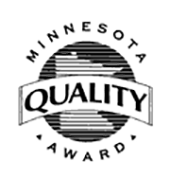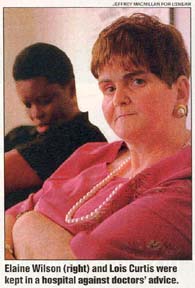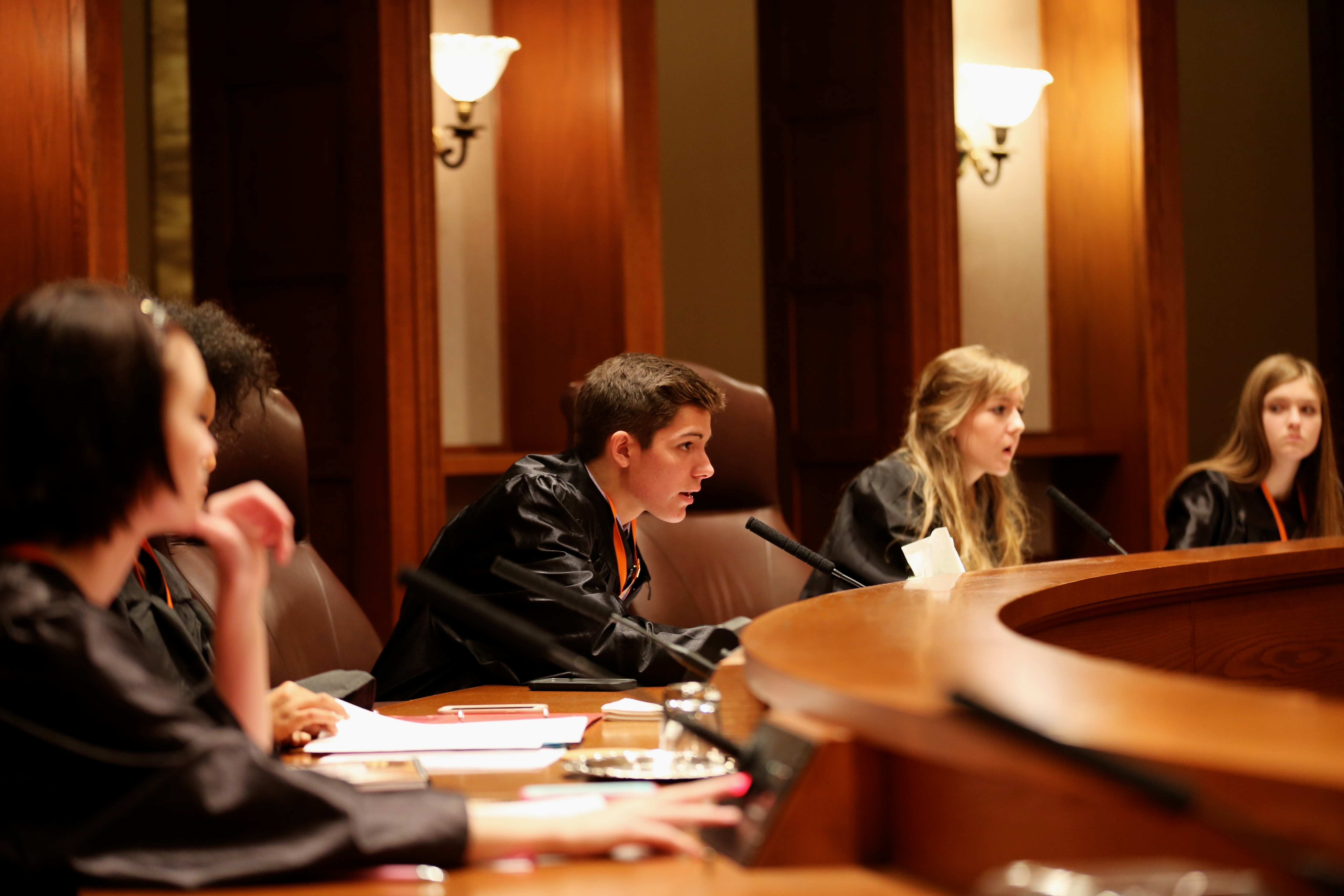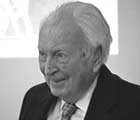The Minnesota Governor's Council on Developmental Disabilities
FORTY-FIVE YEARS OF HISTORY 1971-2016
This article, mainly covering 1997 – 2001, is the sixth of nine segments that will move the history along in five-year sections to bring the Council's work to the present. For context refer to this site's sections "Parallels in Time: A History of Developmental Disabilities" and "With an Eye to the Past" for laws, publications and other documents mentioned in text. In addition these documents were used: 2001 Annual Report; "Partners in Policymaking. Changing Lives. Changing Policies"; and David Ferleger, J.D. interview.<
PARTNERS IN POLICYMAKING®:
The Council's support of the Partners in Policymaking program received the largest single investment of Council funds. Partners graduates were participating in workshops and advanced leadership training to improve their leadership skills. The classroom program and additional advocacy training connected with all areas of their lives as they continued their journey toward self determination, and full integration and inclusion in the community.
Prototypes were being designed to convert the classroom Partners program into online courses. The online courses were intended to enhance and supplement the classroom program. They also provided a similar learning experience for individuals and families who were not able to participate or lived in a state or region that didn't offer Partners, or anyone interested in the topics and wanting to improve their personal leadership skills.
The five e-learning courses that would be launched between 2003 and 2007 were:
- Partners in Making Your Case
- Partners in Employment
- Partners in Education
- Partners in Time
- Partners in Living
THE GROWTH OF PARTNERS:
In 2001, five years after the Partners program was launched in Minnesota, the number of graduates in the state was 146. Each class had completed 20 to 25 competencies and 128 hours of training on best practices in the field of developmental disabilities. They learned and practiced the leadership skills that would help them more effectively communicate with their elected public officials on policy issues, and contribute to systems change.
Nationally and internationally, there were 8,715 Partners graduates.
QUALITY, ACCOUNTABILITY, ORGANIZATIONAL EXCELLENCE:
The Council began to work with the Minnesota Council for Quality in 1997. This collaboration led to training by Council members, staff and suppliers on the Malcolm Baldrige National Award Criteria for Performance Excellence. Always utilizing accountability and strong organizational methods in its work, the Council adopted the continuous improvement focus of the Baldrige Framework and incorporated its core values into all aspects of the Council's work. This approach meshed with the Council's mission of providing information, education, and training for knowledge building, skills development, and attitude changes, leading to the increased independence, productivity, self determination, integration and inclusion of individuals with developmental disabilities and their families. [https://mn.gov/mnddc/quality/index.html]
AWARD:
On February 11, 2000, the Minnesota Council for Quality (MCQ) announced the winners of the 1999 Minnesota Quality Award. The Minnesota Governor's Council on Developmental Disabilities was presented with the first ever Achievement (Gold) Award earned by a government organization. Gold Award recipients demonstrate "sound and effective approaches responsive to the overall requirements of the criteria …evaluation and refinement… and good trends for most areas important to their business requirements" (MCQ Press Release). The Council's focus on leadership development, the creation of the Partners program in 1987, and its implementation in 21 states just five years later were factors in the recognition
Only two years earlier, the Council embarked on its quality journey and was recognized at the Commitment, or beginning level.

CULTURAL DIVERSITY OUTREACH PROGRAMS:
The Council recognized that the development of local leadership among culturally diverse parents of children with developmental disabilities was extremely important to creating inclusive, multicultural communities The cultural outreach program that began in the African American community in 1992 extended to the Native American community in 1995, with training classes for parents who were members of the Leech Lake and White Earth bands of the Minnesota Chippewa Tribe; and was introduced in the Hispanic community in 1999.
These cultural outreach programs were intended to prepare parents with children with developmental disabilities who are also members of minority communities for the Partners in program. By 2001, a total of 17 parents from the minority communities were Partners graduates.
LEGISLATION
-
1998 WORKFORCE INVESTMENT ACT [WIA]:
The purpose of WIA was to, consolidate and improve employment, training, literacy, and vocational rehabilitation programs…to meet the needs of both individual job seekers and employers by providing job seekers with access to employment and training opportunities and linking employers to a pool of qualified applicants.
State employment and vocational rehabilitation programs were tasked to provide access to their services in coordinated One-Stop Career Centers. The Centers, in turn, were expected to work with eligible individuals with disabilities who needed more intensive services and job training.
-
1998 REHABILITATION ACT AMENDMENTS:
These amendments were part of the WIA, consolidating "several employment and training programs into a statewide system of workforce investment partnerships." For the Vocational Rehabilitation program, emphasis was placed on:
- Expanding the exercise of informed choice by individuals with disabilities;
- Streamlining administrative procedures to improve program efficiency and access to services;
- Increasing opportunities for high quality employment outcomes;
- Ensuring due process; and
- Linking the VR program to a State's workforce investment system.
Information Memorandum RSA-IM-98-20
August 17, 1998 -
1999 OLMSTEAD DECISION:
The protection of the civil rights of individuals with disabilities was written in the 1990 Americans with Disabilities Act [ADA]. All states were required to provide services, "in the most integrated setting."
In 1995, Olmstead vs. L.C. & E.W. was filed in the state of Georgia alleging that Lois Curtis and Elaine Wilson were subjected to unnecessary segregation in a state institution when state workers found that they could be served well in the community; and that Tommy Olmstead, Commissioner of the Georgia Department of Human Services, was in violation of the ADA.
The central question presented to the Supreme Court was whether the public services portion of the Americans with Disabilities Act compels the state to provide treatment and habilitation for persons with mental disabilities in a community placement when appropriate treatment and habilitation can also be provided in a state institution. On June 22, 1999, the United States Supreme held, in a 6-3 decision written by Justice Ruth Bader Ginsburg that:
…states are required to place persons with mental disabilities in community settings rather than in institutions when the State's treatment professionals have determined that community placement is appropriate, the transfer from institutional care to a less restrictive setting is not opposed by the affected individual, and the placement can be reasonably accommodated, taking into account the resources available to the State and the needs of others with mental disabilities.

After the ruling President Clinton directed all state Medicaid programs to develop plans to comply with the Olmstead decision and ADA requirements. In 2001, President George W. Bush issued Executive Order: Community-Based Alternatives for Individuals with Disabilities. Related Federal agencies were charged with aiding state governors in their development of a comprehensive plan to implement the ADA's community integration mandate.
-
2000 DD ACT AMENDMENTS:
In 2000, Congress reauthorized the Developmental Disabilities Assistance and Bill of Rights Act in the continuing evolution of the legislation originally enacted in 1963. For the first time, self determination was written in as a goal:
Support the development of national and State policies that reinforce and promote, with the support of families, guardians, advocates, and communities, of individuals with developmental disabilities, the self-determination, independence, productivity, and integration and inclusion in all facets of community life (42 USC 15001, Section 101.b)
Family support was also an important part of this reauthorization and it was understood that families with children with developmental disabilities living at home had unique issues that required resources and support.
It is in the best interest of our Nation to preserve, strengthen, and maintain the family. It is the policy of the United States that all programs, projects, and activities funded under this title shall be family-centered and family-directed, and shall be provided in a manner consistent with the goal of providing families of children with disabilities with the support the families need to raise their children at home.
YOUTH LEADERSHIP:
Youth leadership became a focus of the Council's work in the 1990s. The Leadership for Empowerment Program, as part of the YMCA Ridgedale Branch, offered two programs that recognized the capacity of youth with disabilities to be leaders:
Youth in Government: Over a four day January weekend, middle school and high school students occupied the State Capitol, assumed leadership roles in all three branches of state government, and performed their respective functions – creating public policy, carrying out the laws of the state, and interpreting those laws.
Service Treks: A four-day "outward bound" camping and service learning experience brought together youth with and without disabilities, challenging and supporting each other in a broad range of activities that tested and strengthened their inner strengths and abilities.

The goal of the Leadership for Empowerment Program was to encourage self-determination among youth of varying abilities to become full contributing members in the social, economic, political, and spiritual life of their community.
COUNCIL ACTIVITIES:
-
PUBLICATIONS:
The Council continued to publish and disseminate education, support, planning and training materials. In 2001, a total of 30,103 publications and 5,599 CD-ROMS were disseminated with 99% of those receiving the materials evaluating them as useful and helpful.
-
THIRTY YEARS:
In 2001 the Council, on its 30th anniversary, recognized the work and actions of individuals and organizations that had made a difference in the lives of so many Minnesotans with developmental disabilities and families. The honorable Elmer L. Andersen, former Governor, spoke at this celebration. He recalled in great detail the historical moments and events that contributed to the closing of institutional care facilities in Minnesota and the development of a respectful service delivery system for people with developmental disabilities.

The following day, the Honorable Roger Moe former Senate Majority Leader, addressed the Minnesota Legislature. He told of the profound and moving speech made by Governor Andersen and invited the membership to view the presentation of the 50 year history made by the Council { https://mn.gov/mnddc/past/intro1.html)
During the first 30 years, the Council provided $20 million in grants for research, innovation, education and support. More than 8700 self advocates and parents, nationally and internationally, were Partners in Policymaking graduates.

RECAP:
With the advent of the new century, the imperative to provide services in the regular community, where people live, work, and are educated were emphasized by the Council and obviously had a significant impact on the individuals with developmental disabilities and their families. This meant developing and supporting initiatives that made programs, and the delivery of services and supports accessible and available to all individuals and families, and created a positive public response to changes in how and where people were served. For all members in all communities, A New Way of Thinking was advanced.




